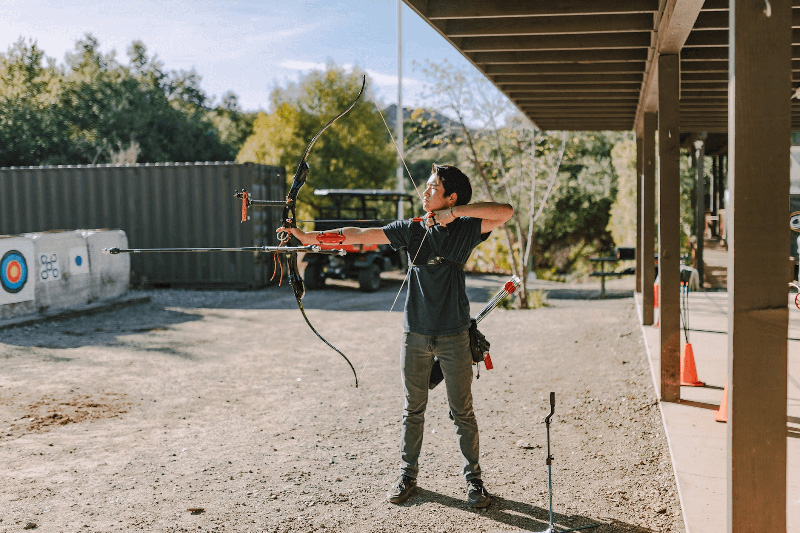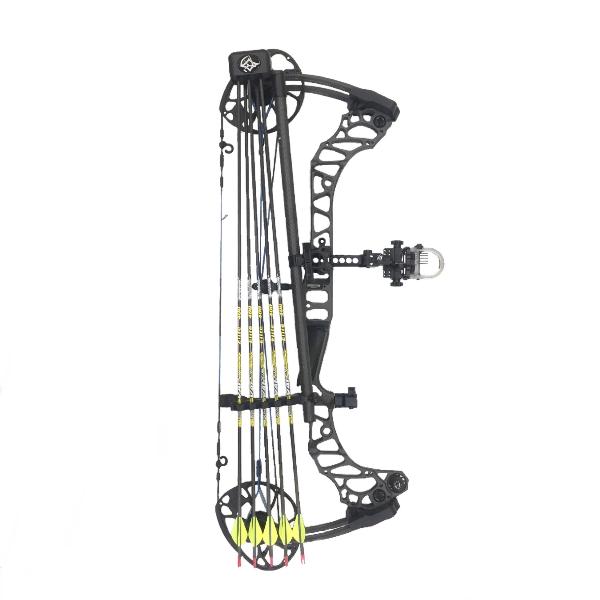The Science Behind Archery Stabilizers: How They Improve Performance
The Science Behind Archery Stabilizers: How They Improve Performance
Blog Article
Master the Art of Archery: Comprehending the Importance of a Stabilizer in Your Configuration
Archery, an old sport that needs skill, precision, and focus, has actually mesmerized people for centuries. Whether one is an experienced archer or just starting their trip, the importance of a stabilizer in their arrangement can not be overstated. This essential tool plays a substantial duty in improving accuracy and boosting total performance. By understanding the advantages of utilizing a stabilizer, thinking about the right variables when selecting one, and correctly installing and readjusting it, archers can elevate their abilities to brand-new heights. So, allow us check out the intricacies of understanding the art of archery and reveal the important duty that a stabilizer plays in attaining success on the range.
The Function of a Stabilizer in Archery
A stabilizer plays a critical role in archery by enhancing equilibrium and lowering vibrations during the shot. A stabilizer assists to neutralize these resonances by absorbing and dissipating the energy (archery stabilizer).
One of the main benefits of a stabilizer is its ability to improve balance. The weight of the stabilizer helps to distribute the weight evenly, reducing the strain on the archer's arm and improving stability.
Along with balance, a stabilizer also assists to decrease torque. When an archer releases the bowstring, there is a natural propensity for the acquiesce turn in the hand. This rotation, called torque, can trigger the arrow to veer off-course. The weight and layout of a stabilizer counteract this turning, guaranteeing a more accurate and regular shot.
Advantages of Making Use Of a Stabilizer
The application of a stabilizer in archery provides countless advantages that enhance an archer's efficiency and general capturing experience. To start with, a stabilizer assists to minimize the resonances generated upon release of the arrowhead. These resonances can trigger the bow to torque or spin, resulting in imprecise shots. By taking in and dampening these resonances, the stabilizer improves the security of the bow, enabling even more accurate and regular shots.
Secondly, a stabilizer aids to balance the bow by adding weight to the front end. This weight circulation counteracts the all-natural propensity of the bow to tip ahead upon launch, reducing the amount of activity and enhancing the archer's capacity to maintain objective on target.

Lastly, a stabilizer can likewise function as a shock absorber, decreasing the shock and recoil experienced upon release. This not just boosts the comfort of shooting yet additionally lessens the danger of injury or strain on the archer's body.
Exactly How a Stabilizer Boosts Accuracy
Enhancing the precision of an archer's shots, a stabilizer plays a critical role in boosting overall efficiency. archery stabilizer. By adding stability to the bow, a stabilizer aids reduce the undesirable motion and resonance that can occur throughout a shot. This reduction in motion permits the archer to maintain a consistent aim, leading to even more regular and accurate shots

Furthermore, a stabilizer helps to wet vibrations that occur upon launch. These resonances can cause the acquiesce tremble, affecting the arrowhead's trajectory and accuracy. By absorbing and dissipating these resonances, a stabilizer helps our website to keep the bow's security and guarantee a precise and smooth shot.
Additionally, a stabilizer can additionally help in balancing the weight circulation of the bow (archery stabilizer). By adding weight to the front of the bow, a stabilizer aids to balance the weight of accessories, such as quivers or sights, which might be attached to the bow. This well balanced weight distribution assists the archer keep a stable and regulated shooting placement, resulting in boosted accuracy
Variables to Think About When Picking a Stabilizer
When picking a stabilizer for your bow, it is essential to think about numerous variables that will contribute to its general efficiency and viability for your individual shooting style. The very first aspect to take into consideration is the length of the stabilizer.
An additional variable to take into consideration is the weight of the stabilizer. The weight of the stabilizer can influence the equilibrium of your bow.
Some stabilizers have adjustable attributes, such as flexible size or flexible weights, which permit you to tailor the stabilizer to your specific requirements. Carbon fiber stabilizers are light-weight and durable, while aluminum stabilizers use an equilibrium between weight and strength.
Various stabilizers may work far better for specific shooting designs, such as target shooting or hunting. It is suggested to consult with knowledgeable archers or professionals to figure out which stabilizer will certainly finest match your individual requirements.
Tips for Effectively Setting Up and Adjusting a Stabilizer
Longer stabilizers offer more security yet can be much less manoeuvrable, while shorter stabilizers offer raised maneuverability but may compromise stability. Once you have actually selected the ideal size, connect the stabilizer to the bow utilizing the go to website provided mounting equipment. Make sure that the stabilizer is safely fastened and lined up with the bow's riser.
After mounting the stabilizer, it is required to make adjustments to accomplish the preferred balance and shot uniformity. Begin by adjusting the weight circulation along the stabilizer. Furthermore, consider readjusting the angle of the stabilizer to make improvements the shot.

Conclusion
In conclusion, a stabilizer plays a vital role in archery by boosting accuracy and decreasing bow torque. When picking a stabilizer, variables such as material, size, and weight must be considered to fulfill specific needs.
Furthermore, a stabilizer can additionally help in balancing the weight circulation of the bow. By including weight to the front of the bow, a stabilizer helps to balance the weight of devices, such as quivers or views, which might be attached to the bow. Some stabilizers have adjustable attributes, such as flexible size or adjustable weights, which permit you to personalize the stabilizer their website to your particular needs. Carbon fiber stabilizers are sturdy and lightweight, while aluminum stabilizers supply a balance between weight and strength.
Longer stabilizers offer even more stability but can be less maneuverable, while shorter stabilizers supply raised ability to move yet might compromise stability.
Report this page